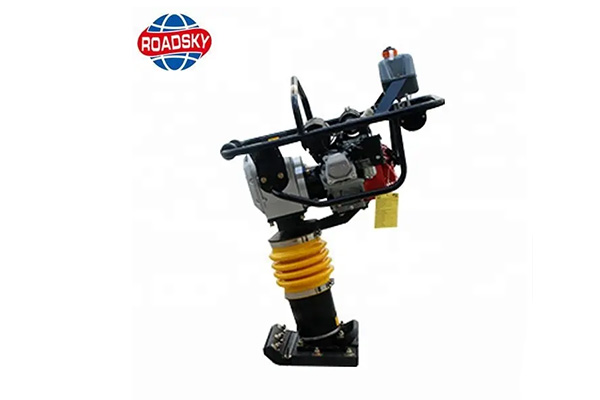Jumping Jack Compactor: What’s it and How to Use
When it comes to construction and landscaping projects, ensuring a solid and stable foundation is of paramount importance. One indispensable tool in achieving this is the Jumping Jack Compactor.
What is Jumping Jack Compactor?
Jumping Jack Compactor, also known as a tamping rammer or a compaction rammer, is a compact and powerful machine designed for compacting soil, gravel, and other granular materials. It features a large vibrating plate or foot that moves up and down rapidly, exerting a tremendous amount of force onto the surface beneath it. This high-frequency vibration compacts the soil particles tightly together, reducing air voids and enhancing the load-bearing capacity of the ground.

Applications of Jumping Jack Compactors
Jumping Jack Compactors find versatile applications in various industries and projects, including:
1. Construction Sites:
- These compactors are essential for preparing the ground before laying foundations, whether for buildings, roads, or pavements.
- They are used to ensure soil compaction, preventing settlement and structural issues in the future.
2. Landscaping:
- In landscaping projects, jumping jack compactors are used to prepare the ground for laying sod, turf, or pavers.
- They help create a level and stable surface for decorative elements like fountains, statues, or outdoor seating.
3. Trench Work:
When digging trenches for utilities like water pipes or electrical cables, compacting the soil at the bottom of the trench is crucial to prevent sagging or shifting.
4. Backfilling:
After trenches or excavations are complete, Jumping Jack Compactors are used to compact the backfilled soil, ensuring stability and preventing settling.
How to Use a Jumping Jack Compactor
Using a Jumping Jack Compactor requires skill and attention to safety. Here’s a step-by-step guide on how to operate one effectively:
1. Safety First:
- Wear appropriate personal protective equipment (PPE), including safety goggles, ear protection, gloves, and steel-toed boots.
- Ensure there are no bystanders in the immediate vicinity of the compactor.
2. Inspect the Compactor:
- Check for any visible damage or loose parts on the compactor.
- Ensure that the fuel tank is filled, and all controls are functioning correctly.
3. Prepare the Surface:
- Clear the work area of debris, rocks, or any obstructions that might interfere with the compaction process.
- Moisture content in the soil can affect compaction. Make sure the soil is neither too wet nor too dry for optimal results.
4. Start the Compactor:
- Prime the engine, if necessary, and start the compactor according to the manufacturer’s instructions.
- Ensure that the compactor is on a stable and level surface before operation.
5. Compact in Layers:
- Begin compacting at the edge of the area you want to compact.
- Move the compactor forward slowly and in straight lines, overlapping each pass by about 50%.
- Compact the soil in layers, typically in 4- to 8-inch increments, depending on the compactor’s size and the type of soil.
6. Maintain a Proper Pace:
- Do not rush the compaction process. Allow the machine to do its job effectively.
- Maintain a steady pace to ensure uniform compaction.
7. Check the Compacted Area:
- After compacting, inspect the compacted area for any soft spots or unevenness.
- If necessary, repeat the compaction process in problem areas.
8. Shut Down Safely:
- Turn off the compactor’s engine and allow it to cool down.
- Clean the compactor and store it in a secure location.
Conclusion
Jumping Jack Compactor is an indispensable tool for achieving proper soil compaction in construction and landscaping projects. By understanding its functions and following proper usage guidelines, you can ensure a solid foundation and a stable surface for your projects, ultimately leading to safer and more durable structures. Remember always to prioritize safety and adhere to manufacturer instructions for the specific model you are using.

